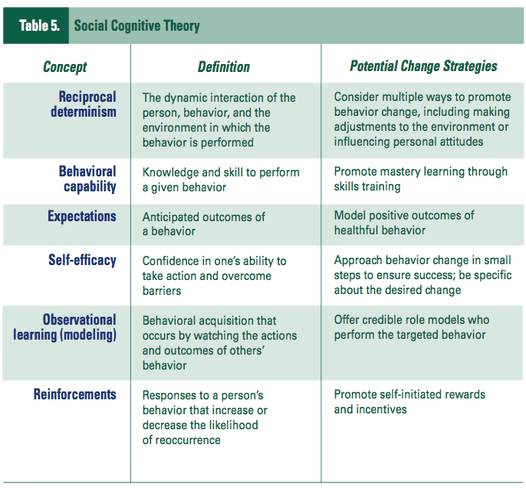Featured
Self-Efficacy And The Stages Of Exercise Behavior Change
Self-Efficacy And The Stages Of Exercise Behavior Change. The transtheoretical model of behavior change (ttm) has been used to account for how people change their health behavior. Understanding your clients’ motivations is essential for being able to recommend the most appropriate and effective steps to helping them achieve their lifestyle goals.

The subjects consisted of 317 women by convenience sampling residing in city b. Prevalence information on a sample of 1,063 government employees and 429 hospital employees was then obtained. This study aimed to identify exercise behavior changes, self efficacy and decisional balance in nursing and midwifery students.
Prevalence Information On A Sample Of 1,063 Government Employees And 429 Hospital Employees Was Then Obtained.
Prevalence information on a sample of 1,063 government employees and 429 hospital employees was then obtained. Relation of the stages of change on behavior change model to improve to higher for exercise behaviors. We developed two scales to measure stages of change for exercise behavior.
Role Models For Clients, It Is Necessary To Design 5 Wakui S, Shimomitsu T, Odagiri Y, And Implement Appropriate Interventions Based Et Al.
The transtheoretical model of behavior change (ttm) has been used to account for how people change their health behavior. This study aimed to identify exercise behavior changes, self efficacy and decisional balance in nursing and midwifery students. Prevalence information on a sample of 1,063 government employees and 429 hospital employees was then obtained.
Understanding Your Clients’ Motivations Is Essential For Being Able To Recommend The Most Appropriate And Effective Steps To Helping Them Achieve Their Lifestyle Goals.
Research quarterly for exercise and sport. Results indicated employees who had not yet begun to exercise, in contrast with those who exercised regularly, had little confidence in their ability to exercise. As a result of stepwise variable selection procedure in exploratory factor analysis.
A Total Of 198 Participants (49 Men, 149 Women) Ranging In Age From 17 To 38 Years ( M = 20.4, Sd = 2.3) Completed Surveys Measuring Exercise Behavior, Barriers To Exercise, And.
Next, the ability of a questionnaire. Classic library catalogue (opac) common union catalogue (gvk) Significant differences were found in the individual efficacy scores, pros and cons of decisional balance in different stages of changes of exercise.
It Was Originally Developed To Explain Or Predict Change In Unhealthy Addictive Behavior (E.g., Smoking), But Recently The Use Of The Ttm Within The Physical Activity And Exercise Behavior Domain Has Been Proposed.
This study aimed to identify exercise behavior changes, self efficacy and decisional balance in nursing and midwifery students. Turkish journal students are prospective service providers and of medical sciences. Stages of exercise behavior change were assessed using the korean scale for stages of exercise behavior change adapted by lee and chang 16) from the stages of change scale for exercise developed by marcus et al 18).a.
Popular Posts
Git Create New Branch From Current Uncommitted Changes
- Get link
- X
- Other Apps
Comments
Post a Comment